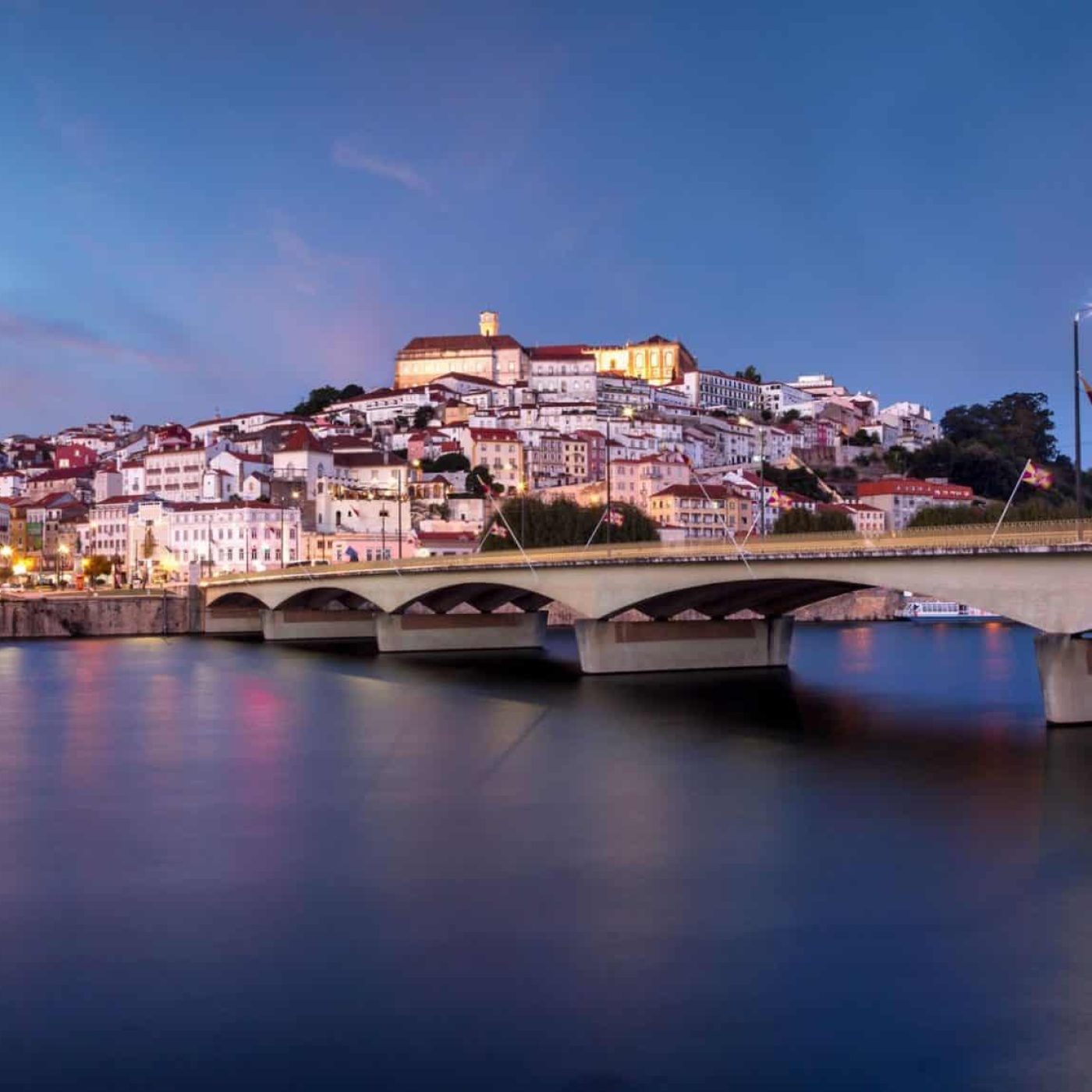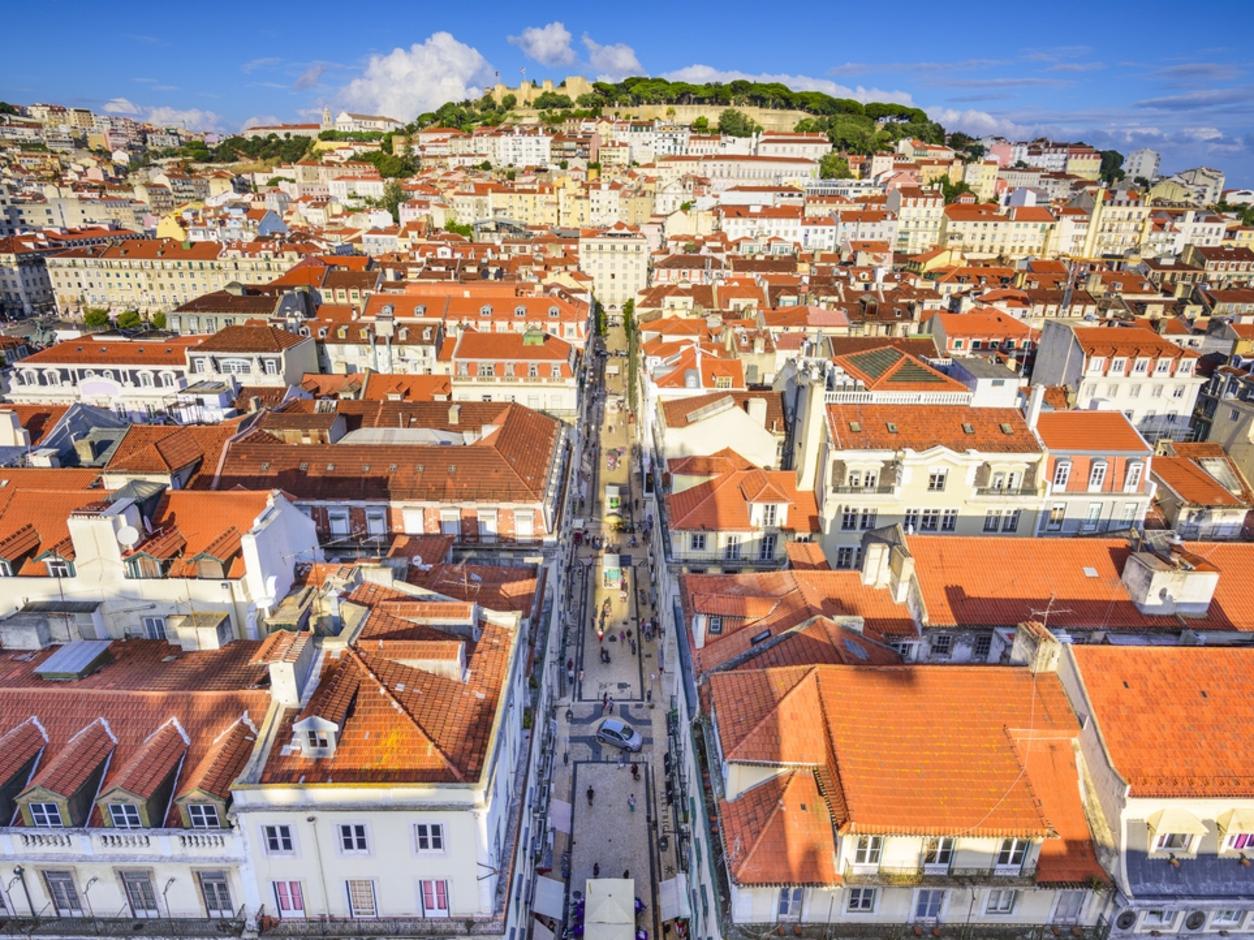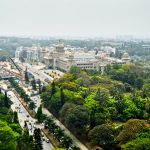Travel around Coimbra with Bobby
Day 1Stepping Back in Time: Coimbra’s Ancient Heartbeat

My journey began in the old town of Coimbra, where history seemed to breathe through every stone. I checked into Hotel Quinta das Lágrimas, a stunning palace-turned-hotel known for its royal connections and lush gardens. After settling in, I wandered over to the iconic University of Coimbra, one of the oldest in Europe. Walking through its grand library, Biblioteca Joanina, felt like stepping into another era, surrounded by ancient books and Baroque architecture. The view from the top of the university offered a breathtaking panorama of the city and the Mondego River.
For lunch, I dined at Zé Manel dos Ossos, a rustic local restaurant serving traditional Portuguese dishes. Their bacalhau à bras, a classic salted cod dish, was rich and flavorful. As the evening approached, I strolled along the Mondego River, where I watched the sunset paint the sky in hues of pink and gold.
Coimbra’s old town is best explored on foot, so wear comfortable shoes! The university is a must-see, but arrive early to avoid the crowds.
- Bobby
Day 2Fado Melodies and Riverside Charm

The second day was dedicated to immersing myself in Coimbra’s musical soul. After a hearty breakfast of pastéis de nata at a local café, I made my way to the Fado ao Centro. This traditional Fado house is where the melancholic tunes of Fado de Coimbra come to life. Unlike other regions, Fado here is sung by men, and the performances have a unique depth that left me captivated.
Afterward, I hopped on one of Coimbra’s electric trams—a nostalgic way to see more of the city while avoiding the uphill walk. I headed to Jardim Botânico, a serene garden perfect for a peaceful afternoon. The garden’s vibrant greenery and exotic plants provided a refreshing break from the urban setting.
Dinner was at Restaurante O Trovador, where I enjoyed leitão assado (roast suckling pig) paired with a local red wine. The evening concluded with another Fado performance, this time in a more intimate setting at A Capella, a former chapel turned music venue.
Lunch at Restaurante O Trovador was delightful, with the leitão assado being the standout dish. The roast suckling pig was tender and flavorful, paired well with local wine. The restaurant’s traditional décor and friendly service made the meal memorable.

Food
Continuing my stay at Hotel Quinta das Lágrimas was a joy, as the gardens and tranquil atmosphere provided a perfect retreat after a day of exploring. The service remained impeccable, and I particularly enjoyed the peaceful breakfast overlooking the gardens.

Accomodation
The Fado performance at Fado ao Centro was an emotional and captivating experience. Coimbra’s unique style of Fado, sung by men, offered a deeper, melancholic sound that was different from other regions. It felt like a private window into the city's soul.

Activity
Fado is an integral part of the Coimbra experience, so don’t skip it. Be sure to balance sightseeing with some quiet moments at the botanical gardens for a change of pace.
- Bobby
Day 3Medieval Mysteries and Cultural Treasures
Today, I ventured out to explore Coimbra’s medieval past, starting with the Sé Velha (Old Cathedral). This Romanesque masterpiece is one of the best-preserved structures of its kind in Portugal, with its fortress-like walls and a serene interior that invites reflection. From there, I walked through the Almedina Arch, a gateway to the old town that has stood for centuries.
For lunch, I stopped at Arcada, a charming restaurant near the city center, where I tasted chanfana, a slow-cooked goat stew popular in the region. The flavors were rich and comforting, perfect for fueling my exploration.
In the afternoon, I took a short bus ride to Portugal dos Pequenitos, a delightful park showcasing miniature versions of Portugal’s famous landmarks. This place is especially great for families but also offered a quirky way for me to learn more about the country’s architectural heritage.

Lunch at Arcada was a rich experience, particularly the chanfana (goat stew). The flavors were bold, and the portions were generous, offering a hearty taste of local cuisine. It’s definitely the place to try authentic Portuguese stews.

Food
The comfort and elegance of Hotel Quinta das Lágrimas continued to impress. Waking up in such a historical and luxurious setting adds a unique touch to the entire Coimbra experience.

Accomodation
Visiting Portugal dos Pequenitos was a quirky and fun way to learn about Portuguese architecture and history. Though geared toward families, it’s equally enjoyable for adults who appreciate craftsmanship and cultural insights.

Activity
The Old Cathedral is a gem for history lovers, and Portugal dos Pequenitos is unexpectedly fun, even for adults. Try the chanfana if you’re up for a hearty, local dish.
- Bobby
Day 4 Modern Coimbra and Nighttime Adventures
The final day was about experiencing Coimbra’s modern side and sampling its vibrant nightlife. I started by exploring the more contemporary parts of the city, like Praça da República, a lively square filled with students, cafés, and street performers. Here, I visited the Machado de Castro National Museum, which houses an impressive collection of art and artifacts. The museum’s highlight was its Roman cryptoporticus—a hidden underground structure that adds a layer of mystery to the visit.
For dinner, I treated myself to a fine dining experience at Dux Petiscos e Vinhos, a modern restaurant known for its creative take on Portuguese tapas. The octopus salad and grilled sardines were absolutely divine, complemented by a selection of local wines.
As night fell, I headed to Liquidambar, a trendy bar where locals gather for drinks and conversation. The music was lively, and the atmosphere was a perfect blend of relaxation and excitement.

Dinner at Dux Petiscos e Vinhos was the perfect modern twist on traditional Portuguese tapas. The octopus salad and grilled sardines were fresh and expertly prepared, and the ambiance was trendy yet comfortable. This spot is ideal for food lovers looking for a more contemporary take on local cuisine.

Food
My final night at Hotel Quinta das Lágrimas was just as lovely as the previous ones. The serene environment, excellent service, and historic surroundings made it hard to leave this enchanting hotel.

Accomodation
Exploring Praça da República and visiting the Machado de Castro National Museum offered a great mix of history and modern life. The museum’s Roman cryptoporticus was a fascinating highlight, and the square buzzed with student life, giving a vibrant end to my trip.

Activity
Coimbra’s modern scene offers a fun contrast to its historical core. Don’t miss a chance to enjoy the nightlife, but be sure to explore both sides of the city to get the full experience.
- Bobby
Summary of My Trip
During my four days in Coimbra, I immersed myself in the city’s rich history, academic heritage, and unique cultural experiences. Starting with the iconic University of Coimbra and its breathtaking library, I explored the narrow, cobblestone streets that wind through the old town. The city’s deep connection to Fado music came alive in intimate performances, adding a soulful soundtrack to my journey. I also took time to unwind in the peaceful Jardim Botânico, balancing my historical explorations with moments of quiet reflection. Coimbra’s medieval treasures, like the Sé Velha and the Almedina Arch, transported me back in time, while modern spots like Praça da República offered a lively student atmosphere.
The culinary side of Coimbra didn’t disappoint either, with delicious meals ranging from traditional dishes like bacalhau à bras and leitão assado to fine dining at Dux Petiscos e Vinhos. Evenings were filled with lively conversations and music in local bars, where I experienced the city’s vibrant nightlife. Coimbra’s blend of old and new, historical landmarks, and student energy made it an unforgettable stop, leaving me with a deeper appreciation of Portugal’s cultural heart.
Through Bobby's eyes
My experiences
Coimbra left a lasting impression on me with its unique blend of history, culture, and youthful energy. The city’s ancient roots, especially seen in the University of Coimbra, gave me a deep sense of its historical importance in Portugal. Walking through its narrow streets felt like stepping back in time, yet the presence of so many students kept the atmosphere vibrant and lively. The Fado performances were incredibly moving, offering a glimpse into the emotional core of the city’s traditions. Each meal I had was rich with local flavors, from the hearty stews to the fresh seafood, making the culinary experience just as unforgettable as the sights. The accommodation at Hotel Quinta das Lágrimas added a luxurious touch, and waking up in a place with royal history made the trip feel even more special. I also appreciated how easy it was to navigate Coimbra, whether on foot or by tram, making it simple to explore both the old and new parts of the city. The mix of peaceful green spaces like Jardim Botânico and lively student squares offered a perfect balance. If I were to offer any advice, it would be to give yourself at least four days to really take in all that Coimbra has to offer. Overall, it’s a city that blends past and present in such a seamless way, leaving you both inspired and refreshed.




I had lunch at Zé Manel dos Ossos, where the bacalhau à bras was full of flavor, with perfectly cooked cod and crispy potatoes. The atmosphere was cozy and authentically Portuguese, adding to the experience. For a local, rustic dining option, it set a high standard for traditional cuisine.
Food
Staying at Hotel Quinta das Lágrimas was a luxurious experience. The hotel is a former palace with royal history, surrounded by stunning gardens. The service was excellent, and the rooms had an old-world charm that made the stay feel special.
Accomodation
Exploring the University of Coimbra was the highlight of the day. The university's library, Biblioteca Joanina, is a masterpiece of Baroque architecture, and the views from the top of the university are simply breathtaking. The historical significance of the place makes it a must-see.
Activity